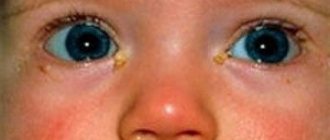It is known that the egg is one of the most useful and nutritious foods for humans due to its composition, which includes many substances essential for our body in the form of trace elements and amino acids, as well as vitamins, healthy fats and protein. However, it is the egg, being the strongest allergen, that can pose a serious threat to the life and health of a small infant. Therefore, the question of whether it is worth introducing egg products into a baby’s diet and when it is safest to do so worries many parents and is quite controversial.
When to give an egg to a baby
When should you give an egg to a baby so as not to deprive its growing body of essential nutrients and at the same time not harm its health?
Pediatricians recommend trying to introduce only the yolks of boiled chicken eggs into the complementary feeding of a baby in the first year of life, since the use of protein for children of this age category is prohibited due to its strong allergenic ability. This can be done starting from seven months of age and with a very small portion. In order to feed the baby the yolk of an egg for the first time, you should separate its small part, about a sixteenth, and dilute it to a puree with the main food, be it breast milk or baby formula. Boiled water will do. A portion of half a teaspoon can be given to the baby and carefully monitor the subsequent reaction. If manifestations of allergies in the form of redness of the skin, diarrhea or swelling and rash do not occur within 24 hours, then the product is harmless to it.
Within a week, the amount of serving can be gradually increased to half the yolk and added in this quantity to the child’s diet until he reaches one year of age.
First feedings with yolk
Pediatricians strongly recommend starting complementary feeding with quail eggs. They do not often cause allergies. Also, a quail egg is very small, but its benefits are several times greater. You only need to start feeding your baby with a boiled egg for the first time. You definitely need to know that this product has been tested and recently hit the store counter. If a young mother doubts the freshness of an egg, then this can be checked quite easily: the purchased product is immersed in water, if it floats, it has been on the store shelf for a long time, if it has sunk, then it is fresh.
In order for the cooked yolk to be safe for the child, it must be properly boiled. For a chicken egg, 10-15 minutes will be enough and any harmful infections will be destroyed. Getting to know the product should start with a small part of it. For chicken yolk it is 1/10th part. Not all children will eat the yolk with pleasure, so it can be added to breast milk or vegetable puree. Pediatricians advise introducing this product into the morning diet so that possible allergic reactions can be monitored in time. On the day when the egg is first introduced, no other new foods should be given. Parents should be sure to monitor the baby’s reaction to the yolk and possible allergic reactions. If they occur, you should immediately contact your pediatrician and stop introducing this product for at least one month. If the baby categorically refuses such a product, then there is no need to insist; after a short period of time, you can offer it again.
Expanding the question: Expanding the menu of a 9-month-old baby on IV
How to introduce an egg into complementary foods
How to introduce eggs into complementary foods for a baby if he is bottle-fed? Is there a difference in adding an egg to the diet for those who are breastfed versus those who are formula fed?
Of course, breastfeeding is more complete for the child, but still requires additional complementary feeding as he grows. Artificial children need it even more. However, there is no big difference between them regarding the inclusion of eggs in the diet. It is no more than a month. Moreover, it is recommended that bottle-fed children start eating eggs a little earlier, from the age of six months.
It should be noted that eggs can only be consumed by children in the form of a hard-boiled yolk. And it should be introduced into complementary foods, starting with tiny portions. Once you are convinced that the product is safe for your baby, you can slightly increase its amount, but not more than half a yolk per day.
Egg white should not be introduced into the diet for up to a year, starting with its careful inclusion in the diet. A child should not even try an egg in the form of an omelet, soft-boiled or fried until he is two years old.
However, quail eggs have recently been increasingly used to introduce infants into complementary feeding, which can really be considered an excellent alternative to chicken eggs in baby food. In value, a quail egg is even superior to a chicken egg, but it practically does not cause allergies. Moreover, the content of a protein called ovomucoid gives the product the ability to suppress the development of allergic reactions.
When the egg is boiled, the yolk should be separated from the white. Then the required amount can be mixed with the main food option. This can be either mother's milk or infant formula. To make sure the product is safe, you should give a very small portion the first time and, if there is no negative reaction, gradually increase the portion in the following days.
When introducing egg yolk into complementary foods, you can use any method and, choosing the most suitable one, feed the baby daily, without exceeding the daily norm. The yolk, in turn, can be ground with milk, added to porridge or any puree dish that he already eats. Sometimes babies willingly take the yolk without additives from a spoon in mashed form, followed by liquid.
Cereals, flour and bakery products in a child’s diet
Cereals are widely used in baby food. Oatmeal and buckwheat are especially useful for babies; you can also use corn, rice, millet and other types of cereals. It will be easier for a one-year-old baby to chew and swallow if the porridge has a uniform consistency, which is why soluble (“instant”) porridges are often used. Closer to one and a half years, you can give well-cooked cereals without additional grinding.
From time to time, pasta can be used in children's meals. They can be given as a side dish or seasoned with soup. However, they should not be abused, as they are rich in easily digestible carbohydrates. It is recommended to offer them to your baby once or twice a week.
Bread is also used in the nutrition of children of this age. Up to 1.5 years, it is better to offer babies only white bread: it is easier to digest. The total amount of bread per day should not exceed 100 g. Starting from 1.5 years, you can include a little rye bread in the diet of crumbs (up to 50 g per day). Children under 1.5 years old are not offered rye bread, since the sour dough from which it is made causes fermentation in the intestines.
Back to contents
Quail eggs for babies
Quail eggs for infants can bring more benefits - due to the rich content of essential amino acids for the body, a quail egg is significantly superior in quality to a chicken egg. In addition, the quail bird does not suffer from salmonellosis and therefore does not pose a threat of infection from its egg, as is the case with a chicken egg. Another advantage of quail eggs is the absence of cholesterol in their composition, as well as a high percentage of phosphorus, iron, potassium and B vitamins.
However, one should not be deceived by the small size of the quail egg. Introducing them into baby's complementary foods also requires caution and starts only with the yolk. Until a child reaches one year of age, he is not supposed to eat more than one yolk. After the child turns one year old, he can try the whole egg along with the white. If the egg suits the child well, and he eats it with pleasure, it is advisable to introduce the product into the baby’s daily diet, but until about three years of age, you should still limit its quantity, which should not exceed three pieces per day.
Rules for introducing delicacies into children's diets
Acquaintance with a new product begins with a small amount. The possibility of its introduction is first discussed with the doctor.
When to start complementary feeding
The child is given the first taste of yolk at the age of 7 months. The initial portion is limited to a few pieces of the product, no more than a quarter of the egg core.
To make it easier for the baby to adapt to new food, it is diluted in a small amount of breast milk. It is also acceptable to add yolk to vegetable purees and porridges.
Limits on the number of eggs consumed
After a successful acquaintance with the quail product, the portion of the yolk is increased every 2-3 days. Under the age of one year, it is advisable for a child to consume no more than one egg yolk per day.
Once children reach one year of age, they can eat whole eggs, along with the whites.
- From the age of one to 3 years, 1-2 eggs are allowed to be added to the diet daily.
- From 3 to 8 years, the daily norm can be increased to 2-3 eggs.
- Schoolchildren aged 8-12 years can eat 3-4 pieces at a time.
- Senior school-aged children can eat up to 4 eggs per day.
except waterfowl (geese, ducks) for cooking . The total number of products of one type should not exceed age standards.

Important Rules
Before you start preparing egg dishes, you should familiarize yourself with important rules when processing this product.
- Do not use cracked eggs for cooking. Store them not on the refrigerator door, but in the main chamber and preferably with the blunt end up so that the yolk does not come into contact with the air cushion. It is better to store eggs in a cardboard box or in an open bowl.
- Boil the eggs for at least 3 minutes and fry for at least 4 minutes.
- Before boiling an egg, wash it and check whether it floats in water - a fresh egg will never float on the surface.
For children, 2-3 eggs per week are enough. Moreover, the longer the egg was boiled or fried, the worse it is digested.
The benefits of quail eggs and their advantages over chicken eggs
Modern nutritionists are actively promoting the use of quail eggs in home cooking for many reasons. The main thing is that these factors are also valued by pediatricians:
- Despite their miniature size, these elements contain much more vitamins A, B1 and B2, cobalt, iron, copper, phosphorus and potassium than their chicken counterpart.
- They very rarely cause allergies in children, unlike the usual product.
Advice: Despite the recently popular raw food diet and attempts by supporters of the approach to include raw quail eggs in the diet already at a tender age, pediatricians advise waiting at least until the child is 7-8 years old. At the same time, we must not forget about salmonella, which is still found in this product, although very rarely. You should not give your child a fresh raw egg; it is better to freeze it, and then defrost it and use only the yolk.
- The product takes an active part in the prevention of anemia and prevents the destruction of tooth enamel.
- The protein part of the product contains a large amount of interferon, a protein that helps restore the body after illness and rapid healing of damaged tissues.
The only negative point characterizing the beneficial nutritional component is that it contains quite a lot of cholesterol. But if the standards for its use during childhood are observed, even this factor is beneficial for the body.
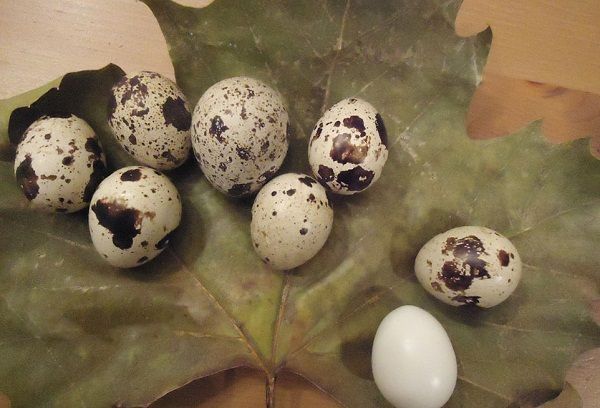
Omelette with tomatoes and zucchini in the oven
Age: from 1 year
Ingredients:
- 5 eggs
- 2 medium zucchini (or zucchini)
- 1 large tomato
- 2 tbsp. l. grated cheese
Preparation:
- Wash the vegetables, peel and grate on a coarse grater. Beat the eggs with a fork until smooth, add grated cheese and mix.
- Combine the mixture with vegetables and pour into a pan greased with olive oil.
- Preheat the oven to 180°C, cover the pan with foil and bake for about 20 minutes, then remove the foil and let the omelette brown for another 5 minutes.
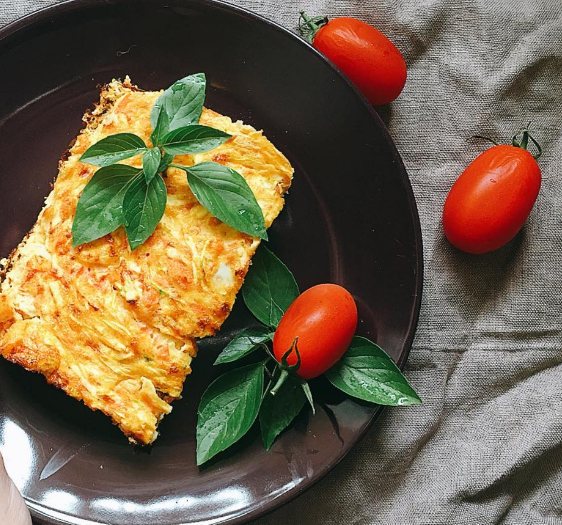
Egg roll with rice
Age: from 1 year
Take (for 3 servings):
- 3 eggs
- 50 g rice
- 100 ml milk
- 30 g wheat flour
- 30 g butter
- 20 g green onions
- salt
Preparation:
- Beat the yolks with milk and flour and stir in the whipped whites.
- Pour the mixture into a greased frying pan and bake in the oven. Place minced rice on the prepared egg layer and wrap it in the form of a roll.
Preparation of minced meat
- Boil the rice, mix with green onions, lightly fried in oil, and chopped hard-boiled egg (1/4 pcs).
- The egg roll can also be prepared with minced stewed cabbage, carrots, and jam.
Popular recipes for children
To prepare healthy food for young children, it is better to limit yourself to simple recipes without the use of spices, ingredients prohibited due to age, large amounts of salt and sugar. Cooking, steaming and baking are allowed.
To steam the casserole:
- 6 quail eggs are combined in one bowl with 200 g of cottage cheese, 30 g of sugar and 30 ml of milk;
- 30 g of butter and 40 g of semolina are added to the mixture;
- then beat everything with a blender for 2 minutes, put it in a silicone mold.
Heat treatment is performed under a closed lid for a quarter of an hour.
It is more convenient to cook omelettes in a slow cooker.
- To create a delicious children's dish, you need to beat 8 eggs with salt and 100 ml of fresh milk in a blender.
- Grease the walls of the heated container with oil, then carefully pour the resulting mixture into it.
- If desired, the composition can be sprinkled with 100 g of grated cheese, then the dish is stewed or baked for 10 minutes.
Cabbage rolls in omelet
Age: from 1.5 years
- 1 small head of cabbage
- 300 g beef or chicken
- 1/2 cup boiled rice
- 1 onion
- 3 eggs
- 1/2 cup milk
- salt to taste
Preparation:
- Peel the head of cabbage, cut out the stalk, place the head of cabbage in salted boiling water and cook for 15-20 minutes.
- Remove from the water, cool, and separate into leaves. Lightly beat off the thickened parts of the cabbage leaves. Place the minced meat on the leaves and wrap in rolls.
- Place them on a greased frying pan. Beat eggs with milk, lightly salt. Pour the mixture over the rolls and bake in the oven.
Preparation of minced meat:
- Boiled beef (or chicken) with a small amount of onion, mince, salt, add boiled rice, a little water and mix everything well.
Omelette with cauliflower
Age: from 1 year
Ingredients (for 4 servings):
- 1 head of cauliflower
- 4 eggs
- 150 g sour cream
- a little grated cheese
- salt to taste
Preparation:
- Separate the cauliflower into florets, rinse thoroughly and boil until half cooked either in a double boiler or in a saucepan.
- Place the cabbage in a baking dish.
- Prepare the filling: beat eggs and sour cream until smooth, add salt. Pour this mixture over the cabbage.
- Sprinkle everything with cheese.
- Bake in the oven at 180° for about 15-20 minutes.

How to introduce a quail egg into complementary foods for a child?
In its raw form, children often refuse to take this product. After all, for a child this is not only unusual, but also, most likely, tasteless: the baby may even develop a strong antipathy to raw eggs. If your baby doesn't want to eat it raw, you can mix the egg with something else, like making an omelet. But make sure that heat treatment is minimal.
Two misconceptions about quail eggs
Or prepare a healthy drink by adding honey and natural fruit juice to a raw egg. Your child will definitely like this drink. For a child, egg products can be boiled soft-boiled or hard-boiled. First of all, each specimen must be thoroughly rinsed under running warm water. Find out more about the beneficial properties of chicken and quail eggs, as well as the benefits and harms of guinea fowl, goose, duck, turkey, and turkey eggs.
For proper hard-boiled cooking, you need to methodically perform the same steps as when cooking soft-boiled.
Egg salad with pumpkin
Age: from 3 years
Ingredients:
- 2 eggs
- 200 g pumpkin
- 2 small onions
For the sauce:
- 0.5 cups kefir
- 1 tbsp. l. finely chopped parsley
- 4 cloves garlic
- 3 table. spoons of vegetable oil
- salt to taste
Preparation:
- Wash the pumpkin, remove the seeds, cut into strips. Thinly slice the peeled onion and pour over boiling water (to remove bitterness).
- Finely chop the hard-boiled eggs.
- Mix the prepared products, place them in a salad bowl, add salt and season with sauce. Serve immediately.
Preparing the sauce:
- Combine kefir with finely chopped parsley, crushed garlic, add vegetable oil. Stir the sauce and beat until smooth and fluffy.
Omelette with cheese
Age: from 1 year
Ingredients:
- 6 eggs
- 1 tomato
- 100 g grated cheese
Preparation:
- Beat the eggs with a fork or whisk. Peel the tomato, grate it on a fine grater and mix with eggs and cheese. Mix well.
- Pour the mixture into a baking dish, cover with foil, make several holes in it and bake at 180° for about 20-25 minutes.
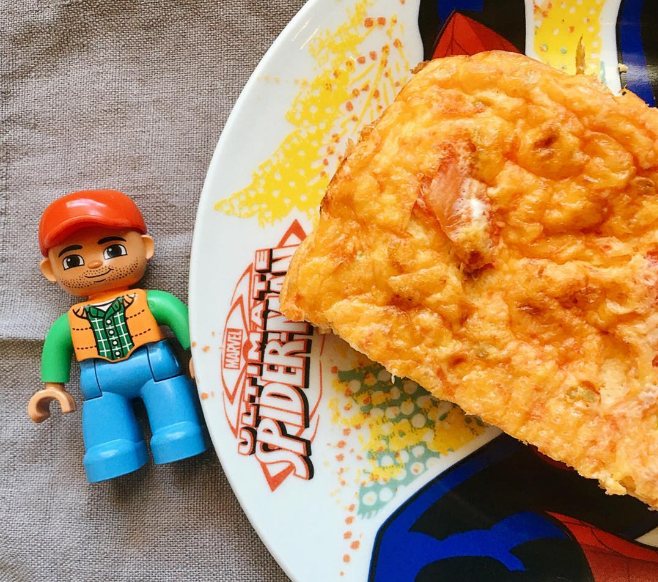
When and in what quantity should an egg be introduced?
Doctors advise introducing eggs no earlier than seven months of age, as this product is difficult for the baby’s digestive system.
Despite the obvious advantages of eggs, they must be introduced into complementary foods with caution.
To begin with, the baby needs to be given a few grains, mashed and mixed with breast milk or formula. Give it before feeding. It is better if you choose the morning for the first test, so that you can then calmly monitor your baby’s reaction to the introduction of a new product.
Protein causes allergies in almost half of the cases. So you need to introduce it very carefully. If you already know that your baby is prone to allergies, then it would be better to avoid it altogether.
Protein should be introduced for about a year, not earlier. At first they give very small portions, gradually increasing them. At one and a half years old, the baby can eat half the protein.
And only at 2 years old can a child safely eat a whole egg.
Omelette with a surprise
Age: from 1 year
Ingredients:
- 2 eggs
- 1/4 tsp. spoons of wheat flour
- 2 tsp. spoons of butter
- salt
For the filling (optional):
- jam
- fresh or frozen berries
- packaging of children's fruit curds
Preparation
- Separate the whites from the yolks and beat with a pinch of salt into a stiff foam. Mix the yolks with flour so that there are no lumps, combine with the whites.
- Melt the butter in a frying pan, pour in the egg mixture and bake in the oven. Place the sweet filling on one half of the omelette and cover it with the other half.
When can you introduce eggs into your baby’s diet?
An egg for a baby is a very heavy product. The digestive system of a child aged 0 to 6 months is not able to digest it. Therefore, Russian pediatricians do not advise rushing to add it to the diet. The yolk should be added to complementary foods first, and only then the white. However, European pediatricians do not agree with their opinion. They believe that the elements it contains help improve the digestion of breast milk and infant formula, preventing frequent regurgitation. Therefore, they recommend introducing eggs into the diet of children from 3 months.
But since we live in Russia, and not in Europe, that means we will follow the standards of our doctors. So, you can start introducing yolk, whether chicken or quail, after 6 months, closer to seven months of age.
You need to start introducing it literally with a few grains, which are kneaded in breast milk or infant formula, and then given to the child before feeding. It is advisable to do this in the morning, and then watch the body’s reaction all day. Egg yolk can cause a rash all over your baby's body, vomiting, constipation or diarrhea.
If you notice something wrong, stop giving it to your baby. Wait a month, or better yet two, and try offering it to your baby again. Perhaps the digestive system is not yet mature for such a product.
If the yolk does not cause any reaction in the body and your baby likes it, after 2–3 days the dose begins to increase. Gradually, literally by a few crumbs. By the age of one year, a child should not eat more than half of a whole yolk.
Useful: Making a menu for a five-month-old baby
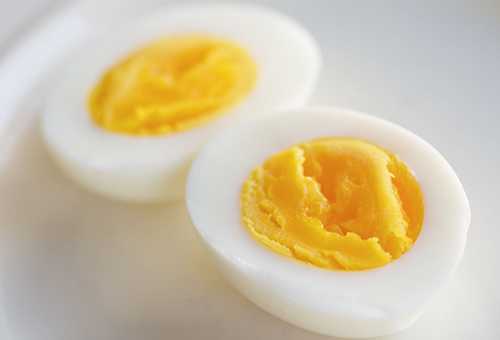
The yolk should be introduced first into complementary foods, as it is more easily absorbed by the child’s body, and only after a long period of time can the protein be carefully tasted
Zucchini stuffed with rice and egg
Age: from 1 year
Ingredients:
- 500 g zucchini
- 50 g rice
- 2 eggs
- 125 ml water
- 1 tablespoon sour cream (can be replaced with thick yogurt)
Yield: 1 family serving
Preparation:
- Rinse the rice and pre-boil it. Cool.
- Boil the eggs as well. Grate the eggs on a coarse grater, add rice, sour cream/yogurt, add a little salt and mix.
- Peel the zucchini, cut into circles 1-1.5 cm thick. Cut a circle in the center, removing the seeds, salt and fill with rice filling.
- Bake in a preheated oven at 170-180° for 20-25 minutes. If the rice starts to burn, cover with foil.









